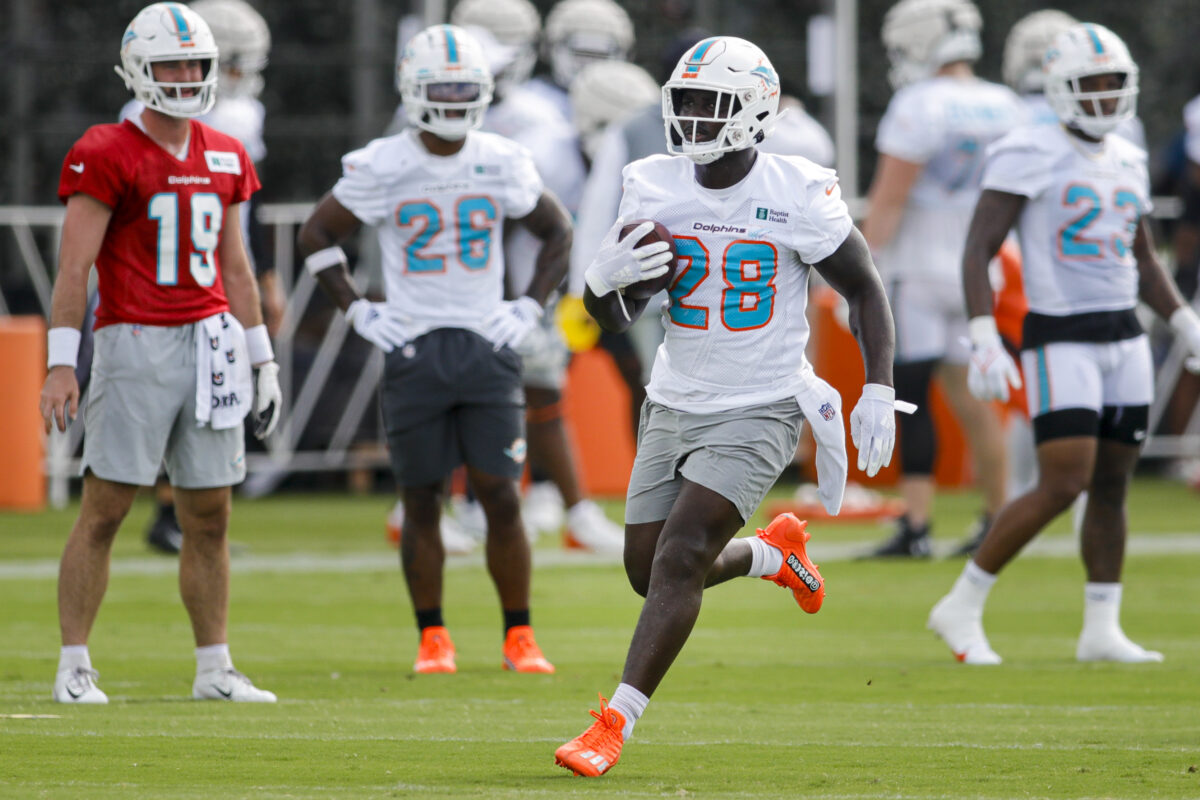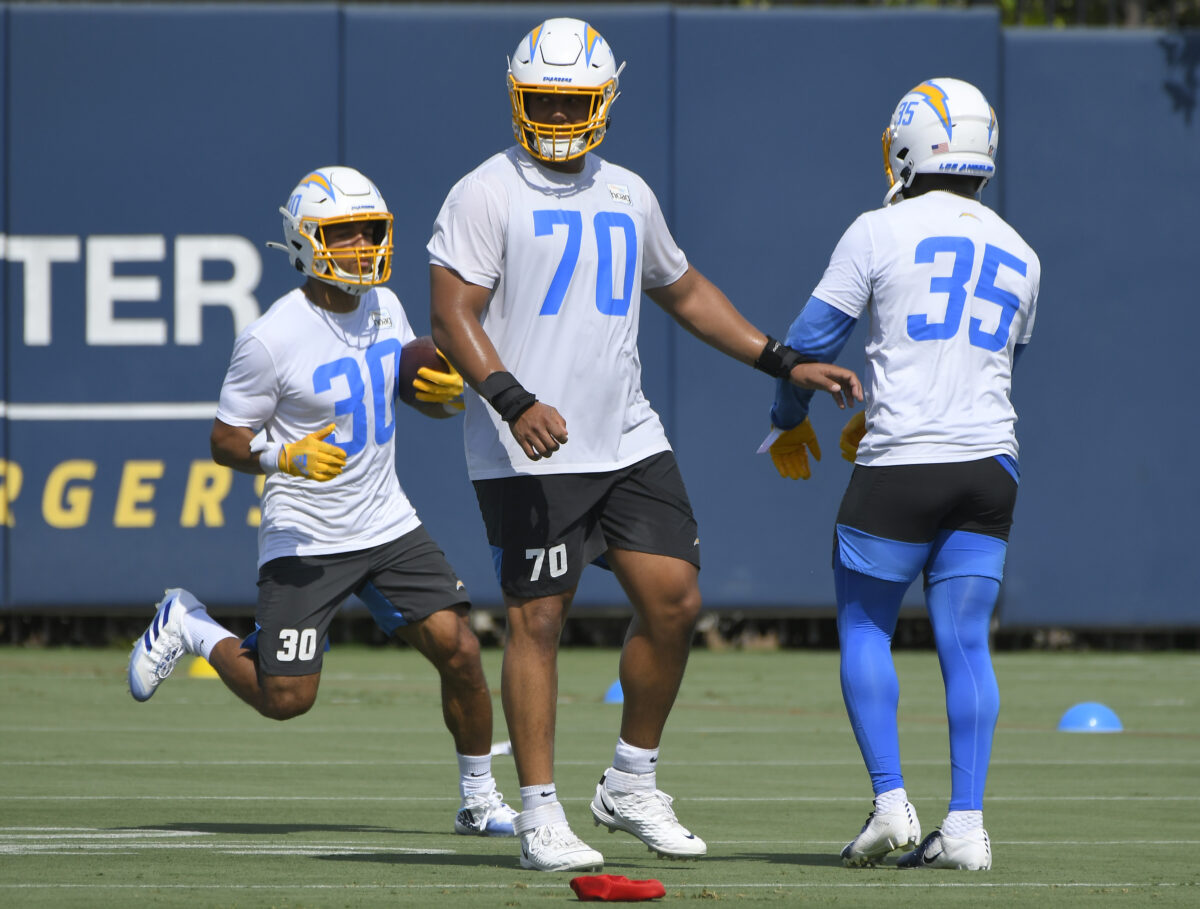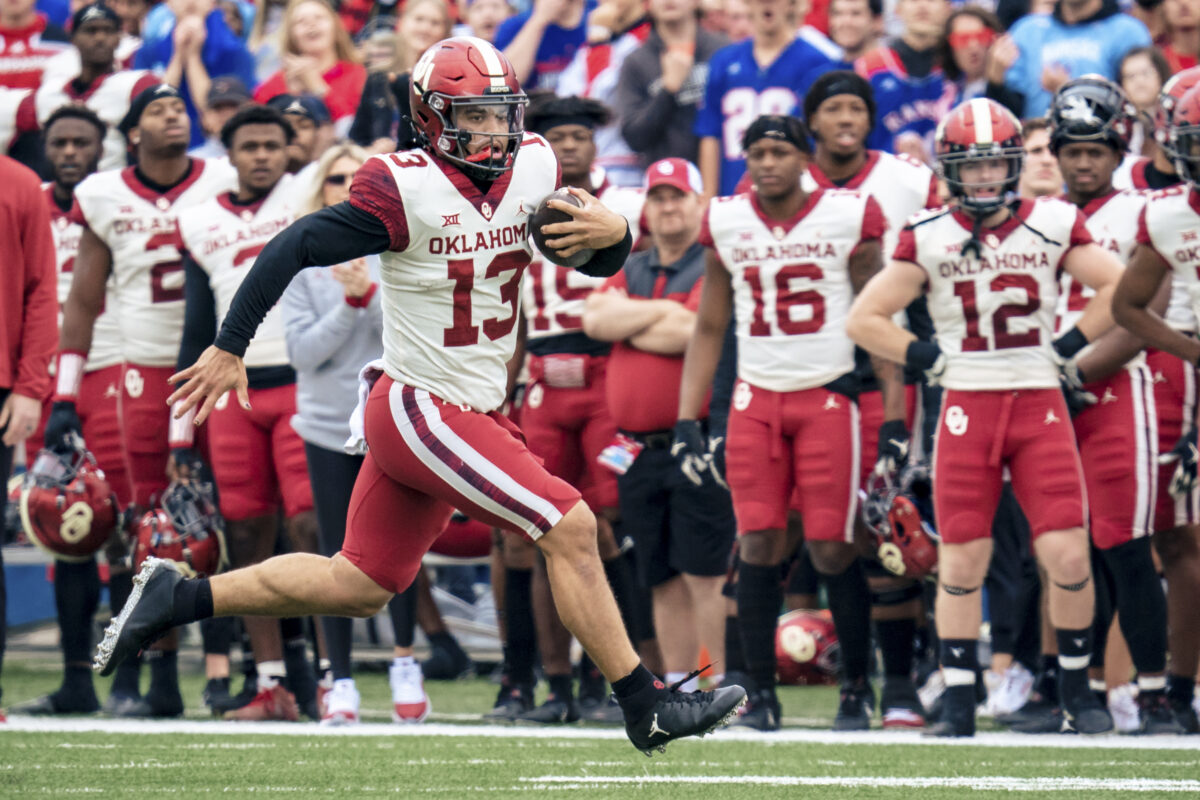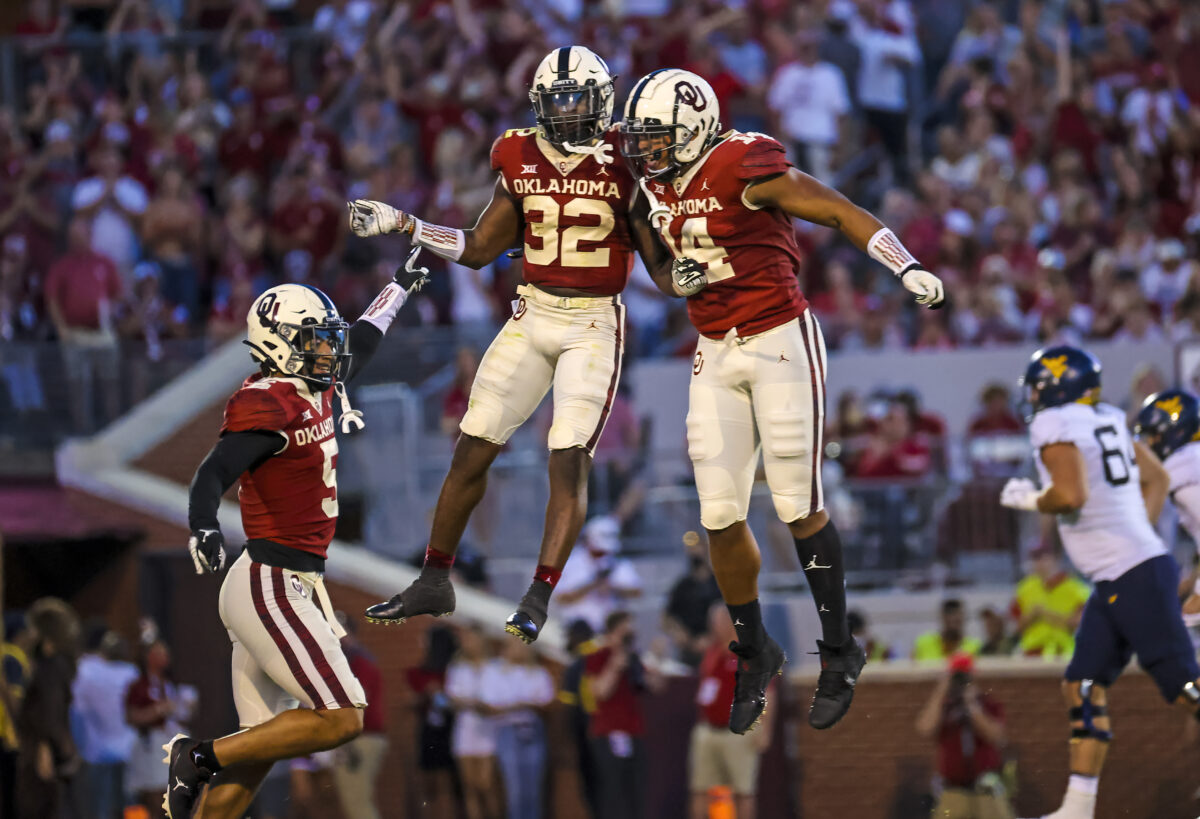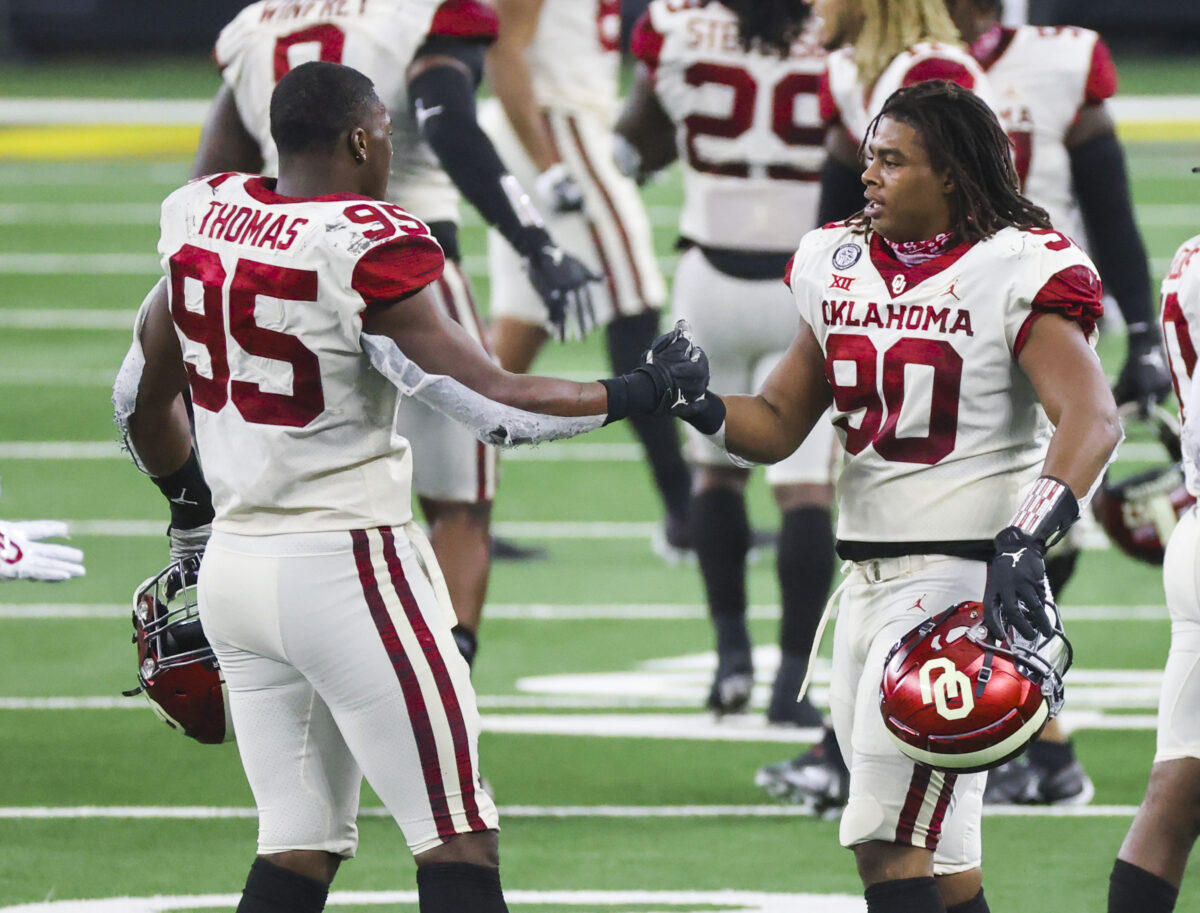With the 53-man roster set, the Chargers’ next task will be to build their practice squad. The squad has steadily increased in size in recent years, with up to 16 players allowed on the 2022 version. Up to four of those players can have less than two seasons of NFL experience, and up to six of them can be NFL veterans of any experience level. The rest must be players who have less than nine games of active roster experience in their career.
Let’s take a stab at a possible group Los Angeles could bring in for their squad:
RB Leddie Brown
While Brown didn’t receive many reps in the preseason, I do believe he made a bigger impression on the coaching staff than Kevin Marks Jr. did. Brown ran for 1,000 yards multiple times during his career at West Virginia, but his issue has always been speed. He’s a potential developmental option behind the four running backs on the 53 thanks to his pass-catching ability.
RB Tyler Goodson
Goodson was left off Green Bay’s initial 53-man roster, and while it’s likely that the Packers keep him on their practice squad, running backs coach Derrick Foster is familiar with the rookie. Foster was the running backs coach at Iowa from 2018-20. In the last year of that tenure, Goodson was named first-team All-Big Ten at running back, Iowa’s first such honoree since 2008. If he slips through waivers and isn’t immediately signed to Green Bay’s practice squad, Foster could campaign for him to make the move to Los Angeles.
WR Michael Bandy
Bandy’s preseason performance was phenomenal, but his size would always limit him to the slot, where the Chargers have a lot of flexibility with the receivers on the 53. If the 2020 UDFA gets through waivers, he should be the first player LA calls when building the practice squad. Bandy is an NFL route runner, full stop. The only reason he’s not on a roster is his lack of inside/outside versatility.
WR Trevon Bradford
Bradford seems the likeliest of the next tier of wide receivers to stay on the squad, as he had plenty of moments in practice. He also had a nice stop-and-start move in the second preseason game against the Cowboys. The rookie undrafted free agent has some traits to work with and I think he’s worth being kept him around.
WR Joe Reed
There’s still something to unlock with Reed, who flashed the ability to play on the outside this preseason before getting injured and missing the last preseason game. Before the preseason, it seemed like Reed was purely a slot and kick return guy. But perhaps his flashes will encourage the Chargers to keep him around for a healthy season in 2022 to see if he can push for a roster spot next offseason.
TE Hunter Kampmoyer
While Kampmoyer may not have done enough to make the 53, I’m sure LA will try to keep him around for his special teams value. Kampmoyer worked with the first team kickoff unit throughout training camp, a role that will now mostly be taken by Tre’ McKitty. The former undrafted free agent is a likely candidate to use up his three call-ups to provide some extra help on special teams, especially if the team gets off to a slow start.
TE Jace Sternberger
Another former Packer, Sternberger was cut by the Steelers on Monday as they trimmed their roster down to 53 as well. Tight ends coach Kevin Koger worked as an offensive quality control coach in Green Bay for Sternberger’s first two seasons, presenting another potential opportunity for LA’s position coaches to petition for a player they’re familiar with. Sternberger is another special teams value addition who could also fill the fourth tight end spot on the active roster if the Chargers feel they need one.
OT Foster Sarell
As of right now, it seems like Sarell will be brought back to the practice squad instead of Zack Bailey, who seems like a waiver claim candidate elsewhere around the league. Sarell split the second team left tackle duties with Bailey this preseason, and I thought Sarell was the better player. Bailey does have side versatility as someone that can play the left and right sides, whereas Sarell is locked in on the left side. But he’s worth putting more developmental time into as a potential backup.
G Ryan Hunter
Whether Hunter comes back or not at this point seems like a coin flip. In my opinion, the 27-year-old played well enough to earn a roster spot somewhere but ultimately lost his spot to Brenden Jaimes. If he’s amiable to returning, he’d be an excellent depth piece from the practice squad with call-up potential if either Jaimes, Will Clapp, or Jamaree Salyer go down with injuries.
DL Andrew Brown
Brown made a few plays for the Chargers this preseason, but he was always on the outside looking in with a locked and loaded top 5 and a tight competition between Breiden Fehoko and Christian Covington for IDL6. He could be a waiver claim candidate or move on to greener pastures if given the opportunity, but if he decides to return, he’d be a valuable addition a la Fehoko last season.
EDGE Jamal Davis II
I thought Davis did nearly enough to make the initial roster, but his lack of refinement as a pass rusher is likely what kept him off the 53. He’s a great run defender on the edge, and the Chargers did invest in him a little bit by signing him out of the CFL. I think he’ll be back to work on his pass rush arsenal and push for a roster spot in 2023.
EDGE Carlo Kemp
It’s hard to nail down what combination of Davis, Kemp, and Emeke Egbule will end up on the practice squad, but ultimately I think LA will keep Kemp as well. Although he wasn’t a standout in practice, Kemp flashed some real tools during the preseason. A former undrafted free agent who spent the spring in the USFL, Kemp’s football journey has already been arduous. Keeping him around and giving him some stability could unlock something.
CB Isaiah Dunn
The Jets acquired Sauce Gardner and DJ Reed this offseason, which ultimately pushed Dunn off the roster this week. The UDFA out of Oregon State got the largest contract for an undrafted cornerback in 2021 and played in 12 games as a rookie. Like Goodson, Dunn’s preseason team will almost certainly want him back. But if Dunn wants a change of scenery, moving from New York to Los Angeles could be the answer.
CB Kemon Hall
Hall has steadily improved this offseason and closed out the preseason with a few strong performances, but the depth of the Chargers roster dictated his release on Tuesday. He’d be another valuable special teams addition to the practice squad after spending 2021 on the active roster. As a corner that knows the scheme, keeping him around at least early on while JC Jackson recovers from ankle surgery as emergency depth seems like a good idea.
S Raheem Layne
Layne should be an easy practice squad addition if he’s willing to return. He had an excellent training camp, and while the preseason games weren’t at that same level, he still looked like a competent depth piece. The rookie UDFA was one of the most pleasant surprises of the offseason, but he may feel as though his effort has gone underappreciated by the Chargers. If they can convince him to return, I’d expect him to have a role when he does get called up for his three games this season.
S Mark Webb Jr.
Probably the most surprising cut of the offseason for the Chargers, Webb missed this roster primarily because of his inability to stay on the field. A knee injury ended his season prematurely last year, with a calf issue holding him out of action this preseason. Webb is still injured, and leaving him off the 53 feels like the Chargers trying to sneak him through to the practice squad to rehab in-house without spending a roster spot. It’s no secret that LA is high on Webb’s potential. If he can stay healthy, I expect him to be one of the first permanent call-ups if other players get injured.
Other Names to Consider
RB Darrynton Evans
RB Kevin Harris
RB Justin Jackson
OT AJ Arcuri
OT Tyler Vrabel
G Michael Schofield
DT Tyler Shelvin
EDGE Emeke Egbule
LB Cole Christiansen
S Will Parks
